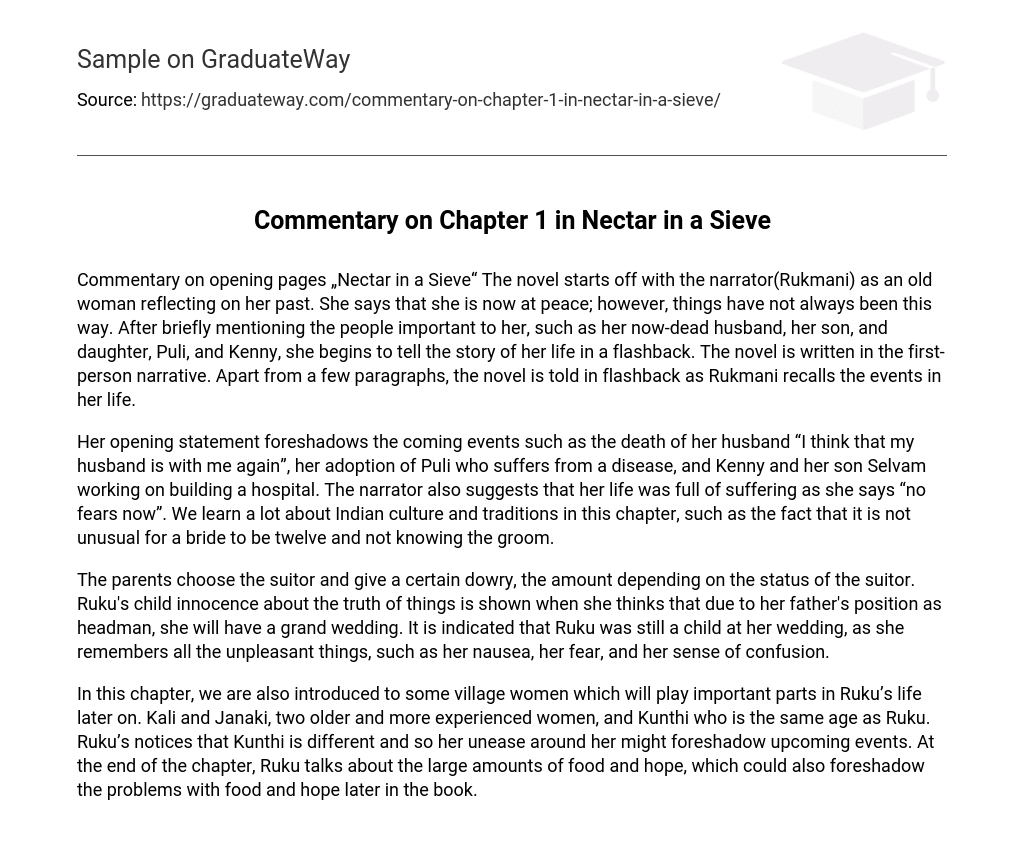The initial pages of “Nectar in a Sieve” feature Rukmani, the narrator, who is an elderly woman reflecting on her past. Despite her current state of peace, Rukmani acknowledges that her life hasn’t always been this way. She briefly mentions significant individuals in her life, including her deceased husband, son, daughter, Puli, and Kenny. Then, she proceeds to recount her life story in a flashback format. This novel follows a first-person narrative, with Rukmani reminiscing about the past events throughout most of its chapters.
The text’s opening statement by the narrator foreshadows upcoming events, which include the demise of her husband, her decision to adopt a sick dog called Puli, and her son Selvam and Kenny collaborating on building a hospital. Moreover, the narrator indicates that she has experienced many difficulties in life as she confidently states “no fears now.” This chapter offers an understanding of Indian customs and traditions, including the practice of accepting young brides who may have little knowledge about their future spouses.
The parents select the suitor and determine the dowry based on the suitor’s social standing. Ruku’s innocence is apparent as she assumes her father’s role as headman will result in an extravagant wedding. However, it becomes evident that Ruku was still a young girl when she entered into marriage, as she remembers feeling sick, scared, and bewildered.
In this chapter, we meet some village women who will become significant in Ruku’s future. Among them are Kali and Janaki, two older and more knowledgeable women, as well as Kunthi, who is the same age as Ruku. Ruku senses something distinct about Kunthi and feels uneasy around her, possibly hinting at future events. Towards the end of the chapter, Ruku discusses the abundance of food and hope, which may also foreshadow the issues with food and hope that arise later in the book.





